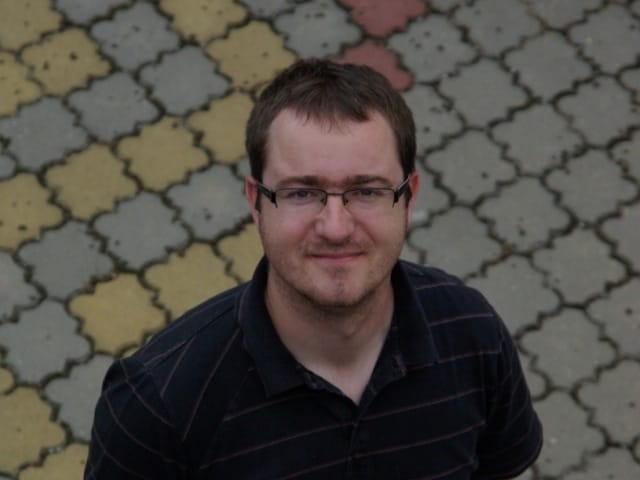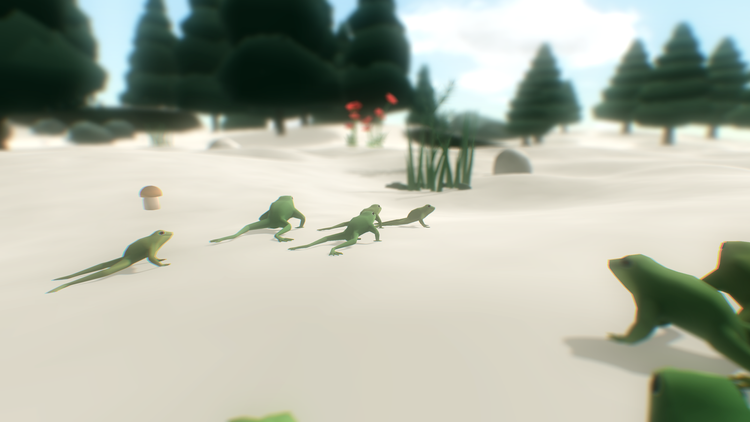We interviewed the DayZ developer right before he was arrested in Greece

You might have heard about the two Czech developers at DayZ studio Bohemia Interactive who were arrested on the island of Lemnos. They face twenty years in jail for supposedly filming a Greek military installation, which in that country constitutes an act of espionage. A representative for Bohemia claims that the men visited Lemnos as tourists — that they were not gathering details to be used in the upcoming military shooter Arma 3.
I met one of the jailed men, Ivan Buchta, just a month before he was arrested, while I was working on a story about the DayZ, the zombie apocalypse mod. He is one of the nicest and most helpful developers I have ever met. I hope he is okay.
I was initially directed to Ivan because I was extremely impressed by the evocative landscapes in DayZ, and I wanted to find out more about them. As the lead designer on Arma 2, he was in large part responsible for their haunting beauty, and it would be greatly ironic if he was indeed observing the Greek landscape for details that could make it into future Bohemia games. Here’s what he had to say.
Kill Screen: How did you go about turning the Czech Republic into Chernarus, the zombie-infested world of Day Z?
The history of Chernarus dates back to the days of “Game 2,” a project that turned into Arma 2. I had just started working for Bohemia, and we were discussing the Central-European terrain. We were looking for a suitable real-life terrain rather than attempting to create a fictional environment. We agreed that best approach would be to choose an existing Czech landscape — one with a structure dense enough for gameplay.
[We decided on] a stretch of Czech terrain between the cities of Ústí and Labem and Decin, part of Ceske Stredohori, also known as the Central Bohemian Uplands. There are deep valleys, rolling hills, and plains, all nicely bordered by the banks of the river Elbe, which allowed us to create a natural sea shore. There are plenty of small villages and a rather dense network of roads, which are important for a military-sim with modern combat.
I’ve always been interested in GIS, maps, environment, landscape ecology, and similar things. The technology of “super-textures” was just being developed and explored. It meant we were able to use real-life aerial photos instead of generic surface tiles. [We created] a terrain mesh covered by aerial orthophotos. We were pretty much sold on it right away.
How familiar are you with the region?
I used to live in Ústí nad Labem growing up, in the part represented in Arma 2 by the villages of Komarovo and Balota. When I was a kid, our family hiked a lot in those hills. Some of our favorite destinations even made it to the game: the Blansko Castle ruins (Zub Castle), a no-name pond near Mogilevka (Ozerko), and the vantage points over Chernogorsk. Tulga, which is Skrytin in real-life, contains ruins of an old youth camp, including a derelict concrete building and an empty swimming pool. It is still great to take people there, show them around, and watch their excitement when they see the familiar shapes in real life for the first time.
Many of the guys in my former airsoft group came from Jilove, a small town not depicted in the game, but would have been located in the valley to the northwest of Gvozdno. So I came to know the surroundings of the fictional Devil’s Castle too. We once crossed the whole stretch of gaming terrain as a navigation exercise, starting in Gvozdno (the outskirts of Jilove) and walking to Chernogorsk. I was working for Bohemia at the time, already assessing the possibility of making Chernarus.

I take it not everything made it into the game.
Of course, it’s not entirely realistic, mostly for gameplay and performance reasons. We added airstrips, reduced the size of the settlements, and simplified the trees and vegetation. There are also large border areas separating the fully-developed areas from the complete nothingness of procedurally-generated bare terrain outside the map.
We also threw in some features from south of Prague, where the company is located, namely the TV tower, called “Cukrak” in real life, and some of the buildings, like the fire station.
We changed the setting to a post-Soviet Russia, although we kept plenty of the typical Czech features in the design: some houses, structures, small objects. Things like road signs and village houses are Russian in order to keep it more exotic, to detach it from real life, so that we could afford some twists in the story. It might have offended someone if we put them it in a plainly realistic setting.



